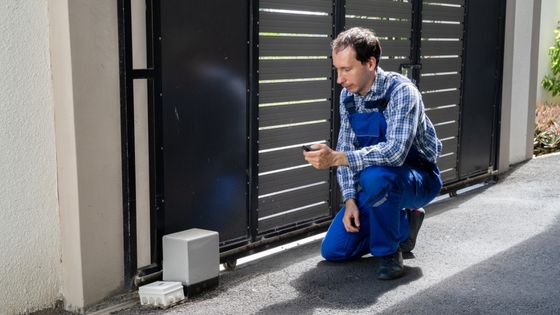You walk into a building, and the automatic doors open. How does that work? There are a lot of different sensors that go into making automatic doors work, but the most common are infrared sensors and motion sensors. Infrared sensors emit an invisible light that is reflected by any object in its path. If something blocks the path of the light, the sensor detects it and sends a signal for the door to open. Motion sensors work similarly, but they detect movement instead of reflected light. Other types of sensors, like weight and capacitive sensors, are also used in automatic doors, but they are different from what is expected from door experts for business.


How Do the Sensors Detect People Approaching?
When you approach an automatic door of door experts for business, sensors in the doorframe detect movement. This movement is then transmitted to a control panel, which activates the motors that open the door. The sensors use an invisible beam of light that stretches across the doorway. When something breaks the beam, the sensors interpret this as movement and send a signal to the control panel. Some doors use microwave or ultrasound technology to detect movement, while others use infrared radiation. These methods effectively detect movement, provided the sensors are positioned correctly and aren’t blocked by any obstacles.
Why Are Sensors Used Instead of Contact Switches?
When you walk up to an automatic door and put your hand on the sensor, you’re activating a switch. But what are you activating? How does that switch turn the door on?
Automatic doors use sensors instead of contact switches for a few reasons:
- Contact switches can wear out over time, preventing the door from opening or closing correctly.
- Contact switches can be dirty, which can affect their performance.
- Contact switches require people to touch them to work, which can be a problem for people with disabilities or carrying something heavy.
- Sensors don’t have any of these problems. They’re durable, work even when dirty, and don’t require any physical contact. Plus, they’re more sensitive than contact switches, making them less likely to be activated accidentally.
What Happens When You Walk Through an Automatic Door?
Sensors tell the door to open when you walk through an automatic door. There are two different types of sensors that are typically used in automatic doors: infrared sensors and ultrasonic sensors.
- Infrared sensors emit an invisible beam of infrared light to the human eye. When this beam is broken, it triggers the door to open.
- Ultrasonic sensors emit high-frequency sound waves. When these waves are disrupted, it tells the door to open.
- So, how do these sensors know when someone walks through the door? Well, they’re looking for movement. The infrared sensor is looking for a change in the amount of infrared light reflected, and the ultrasonic sensor is looking for a change in the pitch of the sound waves.
Once the sensors are triggered, it sends a signal to open the door. This signal goes to a motor, which activates the door opener. The door opener then opens the door so that you can walk through.
How Are Motion Sensors Connected for Maximum Safety?
Another vital safety connection in automatic doors is the relationship between the motion sensors and the door opener. Most openers have an automatic stop and reverse feature, which is there to protect people and objects from being caught in the door.
Here’s how it works: when the sensors detect an object in the door’s path, it sends a signal to the opener to stop and then open the door in the opposite direction. This way, if someone (or something) is blocking the door, it won’t close and trap them.
Conclusion
When it comes to automatic doors, the sensors help to control the door’s opening and closing. There are a few different types of sensors used in automatic doors, each with unique benefits.
There are three main types of sensors that are used in automatic doors: optical sensors, capacitance sensors, and inductive sensors. Each of these sensors has its unique benefits and drawbacks.
- Optical sensors are the most commonly used type of sensor in automatic doors. They are inexpensive and easy to use, and they can be used to detect a variety of different objects.
- Capacitance sensors are more accurate than optical sensors but are also more expensive. They can be used to detect both metal and non-metal objects.
- Inductive sensors are the most expensive type of sensor, but they are also the most accurate. They can be used to detect metal objects only.
















